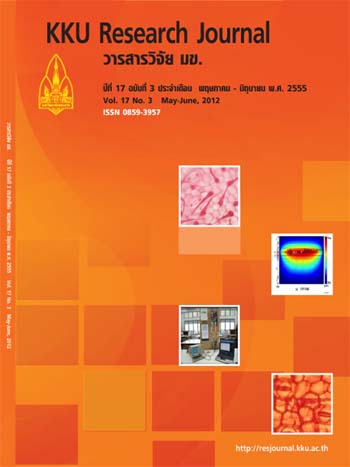Effect of aliphatic and aromatic thiolated chitosan conjugates on permeability of ritonavir across caco-2 cell monolayers and rat intestinal membrane
Main Article Content
Abstract
It was the aim of this study to determine the potential of two aliphatic and two aromatic thiolated chitosan
conjugates: chitosan-thioglycolic acid (chitosan-TGA), chitosan-4-thiobutylamidine (chitosan-TBA), chitosan-6-
mercaptonicotinic acid (chitosan-6MNA) and chitosan-4-mercaptobenzoic acid (chitosan-4MBA), respectively,
as permeation enhancing agents. Ritonavir was employed as model compound. Permeation of the compound was
tested both on Caco-2 cells and freshly excised rat small intestine and apparent permeability coeffi cients (Papp) were
calculated. The lyophilized polymers had a thiol group content in the range of 120-250 μmol/g. The 0.5% (w/v)
chitosan-6MNA exhibited a more pronounced effect on the absorptive transport of ritonavir across Caco-2 cells
(Papp = 5.90 ± 0.40 x 10-6 cm/s, respectively) in comparison to the control and signifi cantly increased the transport
of ritonavir up to 2.2-fold. Moreover, in the presence of 0.5% (w/v) chitosan-4MBA in Ussing-type chambers,
the absorptive Papp ritonavir was 4.58 ± 0.32 x 10-6 cm/s. According to these permeation results, aromatic thiolated
chitosans showed a comparatively higher transport of ritonavir than aliphatic thiolated chitosans. These thiolated
chitosans would therefore be an advantageous tool for enhancing the oral bioavailability of poorly absorbable
pharmaceutical ingredients.


